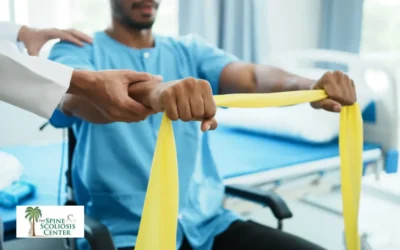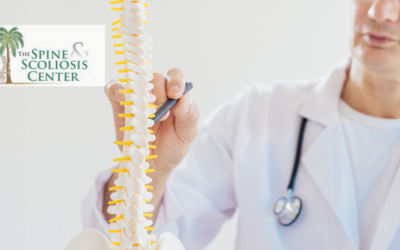There are a variety of spinal conditions that can occur in children of all ages. No matter if the condition is congenital (they’re born with it), worsens with age, or is the result of a disease or traumatic injury, it can be an extremely difficult situation for both parent and child to navigate. Pediatric spinal conditions come in several forms. Some conditions impact mobility and reduce the individual’s capabilities of movement, preventing them from fully participating in interactive play with the people and world around them. Other conditions are neurological and negatively impact coordination as well as the function and growth of the spinal cord and nerves.
Types Of Spinal Disorders
As mentioned above, there are many different kinds of spinal disorders that may impact children of all ages, from infants to young adults. Some of the most common types of spinal disorders that are present from birth include:
- Spina Bifida, a deformity in the growth of vertebrae surrounding the spinal cord
- Split-cord malformation, a division of the spinal cord into two separate ones
Common spinal disorders that develop or worsen in adolescents include:
- Scoliosis, an abnormal curve of the spine
- Scheuermann’s Disease, abnormal growth of spinal bones that causes an exaggerated hump in the thoracic spine
- Spondylosis, fracturing of the bones under stress, typically repetitive use of specific joints
Watching For Pediatric Spinal Deformities
In young children, common signs that there may be a pediatric spinal deformity include the emergence of a “humpback,” lower back pain, and walking with a pronounced “waddle” when other children their age are walking normally. A displaced vertebra can be experienced by children as young as six years old, and sometimes there isn’t any pain. It’s important to watch for early signs of pediatric spinal deformities as they tend to respond better to treatment the earlier they are caught. Many pediatric spinal deformities, especially when caught earlier on, can be treated conservatively through bracing or physical therapy. Others may require surgery.
Diagnosing Spinal Deformities In Children
Spinal disorders are sometimes found at birth due to an obvious physical deformity of the spine, abnormal bladder or leg function, or constant expression of pain. Children born with spina bifida or myelomeningocele typically exhibit obvious symptoms to doctors. If your child has a spine disorder left untreated, it may develop into further issues with walking, urination, and pain. Your doctor will diagnose your child by conducting a thorough physical examination that includes all the organ systems. They will likely order imaging tests such as computed tomography, X-rays, or magnetic resonance imaging as a diagnostic tool.
Contact Us Today
Spinal conditions in children can range from congenital issues that display themselves at or shortly after birth to conditions that develop over time as they reach adolescence. Some are also caused by injuries such as gymnastics. Diagnosing and treating spinal conditions in children early on can prevent future developmental issues. Call The Spine and Scoliosis Center to schedule an appointment with a spinal specialist today.




0 Comments